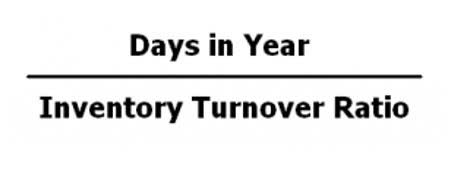Accounting advisory services

The true value of moving to an advisory-based model is that it will reignite your passion for serving clients and enable you to do what you started out in this profession to do—help others. Many firms have an aversion to change because clients are creatures of habit. Even if new technology can streamline operations and make it easier accounting advisory services for clients to work with your firm,, there’s often hesitation before adoption. These are just a few of the HR functions accounting firms must provide to stay competitive in the talent game. In 2018 the firm “committed to CAS,” Khalil said, and hired a staff member with CAS experience to help develop the firm’s CAS capabilities.
Support for deal-related accounting challenges
With the increase in complexity of the business environment and transactions, financial reporting is becoming increasingly challenging. This challenge is amplified by the significant changes being envisaged in the financial reporting standards in many jurisdictions. Numerous companies are also seeking to improve their processes to achieve timely and accurate financial reporting. Staying ahead of new financial reporting requirements can be difficult—particularly for companies that do not have in-house resources to address complex accounting and disclosure matters. We can help enhance your confidence in your business’ financial leadership through proactive, practical, and business-oriented insights. In today’s increasingly complex business landscape, you face a gauntlet of technical accounting, tax, and financial reporting issues.
- You may collect a consulting fee, or—far too often—your client may just assume these 911 phone calls are part of the deal when they hired you.
- The four largest professional services networks in the world are Deloitte, Ernst & Young (EY), KPMG, and PwC.
- Join us for a hype-free conversation about what firms like yours can do with AI technologies today, and what you might have to look forward to in the next few years.
- “The employer can now scale and grow without significantly adding to the headcount,” Moe said.
- In this stage, “they’ll be getting their cadence down and then scaling it,” she said.
- The Practice Forward Graduate Master Learning Series is a CPE qualified, 6-session program presented by our Advisory Partners.
Transform your future
Client engagements are rightfully centered around your client’s business goals and the guidance your firm can provide, in addition to traditional tax compliance. Among small, medium and large accounting firms, a growing percentage of practitioners are beginning to consider ways to value and price their accounting advisory services as a billable product. Many, however, still find themselves stuck in a pattern of giving away their expertise for free. With APIs that can automate the entire tax compliance workflow, accountants no longer have to spend their time on manual activities like entering data, identifying blank fields, or searching for numbers that don’t add up. Instead, they can shift their focus to more value-added activities like providing financial insights and helping clients navigate the complexities of tax law.

Inclusion at Deloitte
“In an ever-changing world, I work side by side with my clients every day, providing them with valuable insights and market-leading services. He also has a proven track record in transaction and carve-out accounting, and business combinations. He helps supports companies in their development of reporting processes, and internal control and risk management systems. If your firm mainly concentrates on tax and compliance, you may want to consider adding additional services.
Summer Marketing Initiatives for Small to Mid-Sized Accounting Firms
All too often, firms miss the mark and fail to realize that value is more important than cost. The advisory relationship is the anchor that enables you to build trust and provide higher-value services to your clients. It is the path to better understanding their goals and developing long-lasting and profitable https://www.bookstime.com/ relationships. If so, it’s time to capitalize on these opportunities and shift your firm to an advisory-based model. By doing so, you can not only make the most of these opportunities, but learn how to build a brand around them, price your services competitively, and reallocate your resources appropriately.

Tax practice of the future: 3 steps to increase advisor…
DTTL and each of its member firms are legally separate and independent entities. DTTL (also referred to as “Deloitte Global”) does not provide services to clients. In the United States, Deloitte refers to one or more of the US member firms of DTTL, their related entities that operate using the “Deloitte” name in the United States and their respective affiliates. Certain services may not be available to attest clients under the rules and regulations of public accounting. Please see /about to learn more about our global network of member firms. Compliance services in accounting simply means ensuring the company’s financial records, reports, and filings comply with the applicable regulations and standards for the type of business.
CoCounsel: The GenAI assistant for tax and accounting professionals
- We can provide consistent assistance on a regular and predetermined basis.
- Discover how our people and technology help clients grow, transform, and innovate to create lasting value, enhance performance, and shape the future.
- With the increase in complexity of the business environment and transactions, financial reporting is becoming increasingly challenging.
- If you’re ready to start your advisory journey, Practice Forward provides a true roadmap for shifting your business model to support advisory centered client relationships.
- In addition to your tax and accounting credentials, accounting advisory requires a special set of soft skills and experience.
- Accounting advisory services are all about the future — and this shift is picking up steam as more and more accounting firms use technology to automate tax returns and compliance work.
- Bookkeeping isn’t considered “true” CAS, McCurley said, as it happens after the fact and does not provide clients with timely data they can use to improve their businesses.
“You should have a plan to eventually have that person transition to CAS full time,” Merhib said. Otherwise, he said, they’ll struggle to succeed at balancing both aspects of the role. Innovation to results – KPMG Strategy provides a new perspective on how to design and implement strategies that win in today’s market. KPMG teams help you anticipate and balance risk to generate value and a competitive advantage across your enterprise.
Shifting to an advisory business model provides your clients with the guidance and support they are looking for, while enabling you and your staff to use your knowledge and experience to your advantage. To remain competitive in such a challenging business environment, center your offerings on value, not cost, and make the play for your clients’ business beyond this year’s tax filing. Meaningful year-round client relationships reinforce that you are not just a transactional expense, but a committed partner who is there to provide support during tax season and beyond. That’s how today’s accountants can build successful and sustainable businesses that thrive long-term. Traditionally, the revenue model for accounting firms has been a function of tax compliance transactions completed.
At that moment, she didn’t need just accounting expertise, she needed me to be human. Consulting services are typically one-off services on an as-needed basis. When the client runs into a problem, they call you up to ask for your help.
Building a Competitive Service Structure
Solving the accounting challenges of using fair value to report assets and liabilities. Improving deal evaluation, structuring and communication by strategically approaching ASC 805. If you’re not sure what that is, ask them what keeps them up at night. Open a conversation and use those insights to start creating a solution. Pair these with empathy, curiosity, good communication, and the ability to get to the root cause of your clients‘ problems. Hourly rates, on the other hand, punish you for getting better at your job and don’t reflect what clients are actually paying for.


